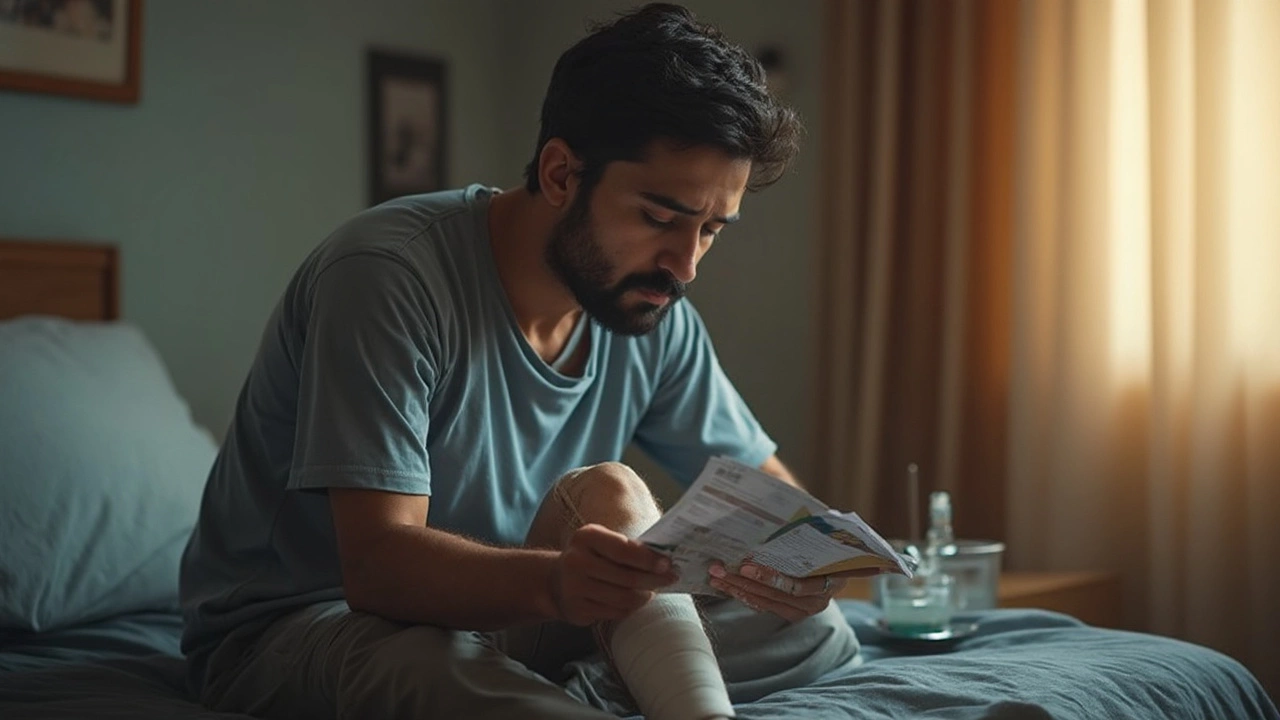Knee Replacement: What You Need to Know
If you or a loved one is facing knee replacement, the first thing to know is you’re not alone. Thousands of Indians go through the surgery each year, and most end up back on their feet with the right plan. Below you’ll find straight‑forward advice on managing the first weeks, dealing with the toughest days, and learning about new options that might avoid surgery altogether.
Recovery Essentials
Day 2 or 3 after the operation is usually the hardest. Pain peaks, swelling spikes, and you might feel like you’re stuck. The article Hardest Day After Knee Replacement explains why this happens and gives a simple UK‑focused plan: ice the joint for 20 minutes every hour, keep the leg elevated, and use your prescribed pain meds on a regular schedule—not just when it hurts.
Showering can feel risky, but you don’t have to wait weeks. The guide Safe Showering After Knee Replacement Surgery says a gentle hand‑held shower head and a waterproof cover for the incision let you get clean after the first 48‑hour window, as long as you avoid high pressure on the wound.
Driving is another common worry. Most surgeons clear patients to drive around two weeks post‑op, but the real test is your ability to do a quick emergency stop without pain. The post Driving After Knee Surgery: How Soon Is Safe? recommends a short drive around the block first, then gradually increase distance.
Physical therapy starts early. Simple quad sets, ankle pumps, and short walks help reduce swelling and keep the muscles from wasting away. Stick to the rehab plan your therapist gives you – skipping days can set you back.
Emerging Alternatives to Knee Replacement
Not everyone wants a metal joint. In 2025, several minimally invasive options are gaining traction in India. The article Newest Alternatives to Knee Replacement in 2025 breaks down four key choices:
- Genicular Artery Embolization (GAE) – a radiology procedure that blocks pain‑sending vessels.
- Arthrosamid injection – a protein that strengthens cartilage.
- MISHA Knee System – a tiny implant that supports the joint without full replacement.
- Radiofrequency Ablation (RFA) – uses heat to silence pain nerves.
All of them work best for people with moderate arthritis who haven’t tried full‑body rehab. Talk to an orthopaedic specialist about eligibility, cost, and availability at major Indian hospitals.
Bottom line: a successful knee replacement hinges on three things – managing pain early, staying active with safe exercises, and knowing the alternatives that might fit your lifestyle. Use the tips above, read the linked articles for deeper detail, and keep the conversation open with your surgeon. With the right approach, you’ll move from the operating table to the playground faster than you think.









